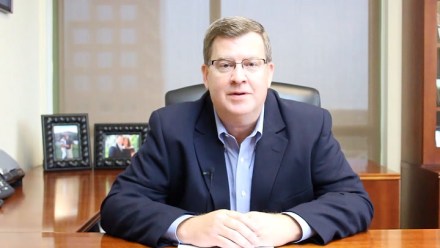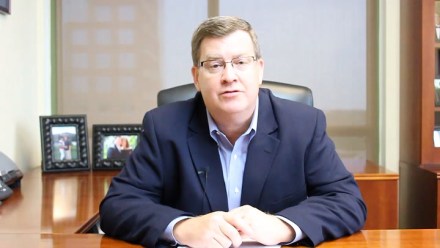Update from the Editors: An earlier version of this article stated that the ADA applies to churches with 25 employees or more. A correction has been made to note the ADA’s actual threshold, which is 15 employees or more.
As an attorney working with churches of all shapes and sizes—from newly formed “baby churches” meeting in living rooms to “giga-churches” with weekly attendance levels matching the population of a small city—I am reminded every day that the church is all about people. That includes not only congregants, but many others—clergy, nonministerial employees, volunteers, and independent contractors. It is their jobs to open the doors, maintain the steeples, and shepherd the people.
Those in charge of the church’s business must recognize how to properly manage all of the people in its workforce. One critical component of this important job is to systematically review a church’s employment policies and procedures by way of a Human Resources Compliance Audit (the “HR audit”). It helps ensure general compliance with employment law. This article provides a broad overview of what a HR audit should look like for a church; however, it is not intended to address the detailed application of all employment laws and regulations applicable to churches. Specific guidance should be sought through additional resources and qualified legal counsel that cover, among other things:
- Distinctions between an employee and a self-employed worker;
- Sources of taxable income;
- Fringe benefits;
- Business expenses;
- Retirement plans;
- Payroll tax reporting;
- Unemployment benefits;
- Negligent hiring, negligent supervision, and negligent retention; and,
- The “ministerial exception” to employment laws.
To stay on track with the above topics, I urge you to look at the many resources regarding these and other important legal topics offered by Christianity Today’s Church Law & Tax Team.
The Church is a Business
I use the words “church” and “business” together in the same sentence. Some people are bothered by this, so let’s briefly discuss it. Like it or not, the modern-day church functions like a business. Like all businesses, churches are subject to increasing legal and regulatory scrutiny.
If you don’t like thinking of a church as a business, then consider this example: Assume a local church embarks upon a needed expansion of its children’s ministry facilities. During a typical week, besides conducting regularly scheduled religious services, the church’s “business activities” related to the construction project might include meeting with an architect or contractor, conducting real estate negotiations with help from the church’s attorney, meeting with bankers, and meeting with community or government leaders about environmental laws or zoning issues. During the same week, unrelated to the construction project, other church “business activities” might include deploying computer technologies, training church volunteers, and hiring, disciplining, or releasing staff members.
During his earthly ministry, Jesus repeatedly taught his followers to be good stewards. To succeed over time, a church must operate under good “business practices” (good stewardship) to ensure it is prepared to do its important “spiritual” business. Using the word “business” to label a vitally important aspect of every church shouldn’t be viewed negatively, as it is descriptive of the operational activities of the church. Being good at church business—Jesus’ ownership, your stewardship—makes for a strong and healthy church.
The Church is an Employer
Church is all about people. The church’s ministry, missions, and programs don’t simply occur; they require the work of people. It is very rare for a church to rely on an all-volunteer workforce. At a minimum, a church usually employs a minister, a secretary, a bookkeeper, and a janitor. As the size of the congregation grows, the number of people employed by the church correspondingly grows.
The church where my wife and I are members recently celebrated its 15th anniversary. During those 15 years, it went from 1 employee and meeting in our pastor’s living room to employing over 700 people who work at multiple campuses. Interestingly, no matter the size of the church—with one employee or hundreds—often the largest single area of expense for a church is the costs associated with compensating its workforce. Therefore, besides the church being a business, the church is also an employer.
Employment Laws Apply to Churches
“We never thought those employment laws applied to us because we’re a church! Isn’t this a violation of our religious freedoms contained in the Constitution?”
Church leaders frequently make this kind of statement when a current or former employee files an employment-related lawsuit or claim. Such frustration reflects the confusion many have about whether a church employer falls under the same laws and regulations as a for-profit employer.
There are important employment-related protections afforded to churches and religious employers through the guaranty of religious freedom in the First Amendment, most notably the right to discriminate in hiring decisions on the basis of religion. However, most employment laws apply to churches and religious nonprofit organizations.
Given that the church is about people, as an employer, the church has an obligation to ensure its policies and procedures comply with local, state, and federal employment laws. Compliance with the law is not only consistent with Christian values and the right thing to do, but it has the added benefit of reducing the church’s risk of employment-related litigation.
The risk of such litigation can be substantial. As Senior Editor Richard Hammar frequently notes, employment-related matters often contribute to the top reasons churches and religious organizations end up in court each year. If you are responsible for, play a role in, or want to ensure hiring, training, reviews, and the departure of employees is all performed to reflect the values of your church and comply with the law, then read on!
What is a Human Resources Compliance Audit?
Church leaders often consider “audit” to be a scary word, likely because of the anxiety associated with an Internal Revenue Service audit or the considerable time and effort involved with an annual external accounting audit. Whatever the reason, don’t get nervous. The word audit is derived from the Latin word auditus, which means the sense or act of hearing (e.g. auditory). In this context, audit means the act of reviewing and considering an existing process.
An HR audit:
• Formally reviews the church’s current employment policies and practices to ensure compliance with current local, state, and federal employment laws and regulations;
• Identifies legal risks that could lead to costly non-compliance penalties or litigation; and,
• Establishes best practices and identifies opportunities for improvement.
The scope of an audit varies depending on the type and size of the church. An HR audit comprises reviewing the organization’s “employment lifecycle” from start to finish, beginning with the hiring process and ending with the conclusion of the employment relationship.
In the for-profit world, particularly in larger corporations, human resources professionals are responsible for the employment lifecycle, including recruiting, screening, hiring, training, performance and compensation reviews, benefits, and the releasing of employees. It’s the human resources department’s responsibility to ensure this all occurs in compliance with applicable local, state, and federal employment laws.
In the church world, few churches have the resources to employ a full-time human resources director, much less an entire department devoted to the lifecycle of its workforce of clergy, employees, volunteers, interns, and independent contractors. Despite limited resources, though, the church is still responsible for the proper management of every staff member’s employment lifecycle and to ensure compliance with all local, state, and federal employment laws. That is why every church should designate an individual (or individuals), either on a full- or part-time basis, to oversee the management of human resources (“Manager”). To succeed, the Manager must possess a firm understanding of all employment law about recruiting, screening, hiring, training, performance and compensation reviews, benefits, and the releasing of employees. If the Manager is not well-educated on employment law and best practices, then the church must allocate adequate financial resources for professional training.
Besides “knowing the law,” other responsibilities of the Manager include (but are not limited to):
• Monitoring how job interviews are conducted;
• Knowing what language should (and should not) be included in an offer letter or in an employee agreement;
• Ensuring new hire reporting occurs;
• Ensuring the church complies with immigration laws;
• Ensuring workers are properly classified as exempt or non-exempt from overtime pay;
• Knowing what information to include (and not to include) in an employee handbook;
• Creating and updating job descriptions; and,
• Overseeing the conclusion of the employment relationship.
The Manager also must prepare to address other legal issues unique to a church’s workforce, including overseeing the selection, training, and supervision of church volunteers, and, if the church has an internship program, ensuring it complies with labor regulations to avoid overtime wage and hour claims (see the article, “Payroll Audits: What Every Church Should Know” in this issue).
In addition, the role of the Manager must provide clarity regarding the reporting structure of supervisors and subordinates, and to make certain someone knows who manages and supervises every employee, volunteer, intern, and independent contractor.
For Smaller Churches
Many young ministers and ministers of new churches ask whether it’s worth investing the time learning employment laws applicable to larger, more established churches. The answer is yes. Our family’s home church grew from 1 employee to over 700 in a remarkably short amount of time. Admittedly, those are some unusual numbers, but it is common for a young church to quickly employ 15 (an important threshold number in employment law discussed later in the article), 50 (another important threshold number), or 100 or more employees. I’ve had countless conversations with young ministers beginning their careers. Not once has one said there were no plans to grow the size of the church. Never. Some we met with now lead many of the largest churches in the country. If you plan on growing your church, then you’ll soon be hiring employees—and you will need to know about employment law.
The Benefits of an HR Audit
Among the many benefits of conducting an HR audit is that it affords a church a focused and objective examination of its current employment policies, practices, and procedures to assess compliance with local, state, and federal employment laws and regulations, to discover legal risks that could lead to costly penalties or litigation, to establish best practices, and to identify opportunities for improvement. The costs associated with conducting an HR audit are minor compared to the potential financial and reputational damage that can be inflicted upon a church employer for non-compliance. A best practice would be to conduct an HR audit every year.
Getting Started
An annual HR audit should include a detailed look at employment laws, hiring practices, employment policies, procedures, and documents, and other employment-related aspects of the church. The remainder of this article will walk through the issues an HR audit should cover.
Reviewing Federal Laws
There are several federal employment laws the Manager must know. The Manager should review whether any of these laws apply to the church and whether the church is operating under each applicable law. These laws are regulated and enforced by the US Department of Labor (DOL), particularly through the Wage and Hour Division, or the US Equal Employment Opportunity Commission (EEOC). The laws most likely to directly affect a church include:
Title VII of the Civil Rights Act of 1964 (“Title VII”): Prohibits discrimination based upon: sex; race; color; national origin; and religion. Title VII applies to churches with 15 employees or more. Religious organizations are exempt from the ban on religious discrimination pursuant to Title VII, Section 702, but not from the other prohibited forms of discrimination.
The Pregnancy Discrimination Act (“PDA”): Applies to churches with at least 15 employees. The PDA extends Title VII and—according to the EEOC—prohibits discrimination on “the basis of pregnancy, childbirth, or related medical conditions; and women affected by pregnancy, childbirth, or related medical conditions shall be treated the same for all employment-related purposes, including receipt of benefits under fringe benefit programs, as other persons not so affected but similar in their ability or inability to work … “
The Occupational Safety and Health Administration Act (“OSHA”): Applies to churches with at least 15 employees. OSHA sets forth a plurality of safety- and health-related regulations.
Age Discrimination in Employ-ment Law (“ADEA”): The ADEA prohibits age discrimination against people ages 40 or older. It applies to churches with 20 employees or more.
Americans with Disabilities Act (“ADA”): The ADA prohibits discrimination based upon disability. It applies to churches with 15 employees or more.
Family and Medical Leave Act of 1993 (“FMLA”): The Family and Medical Leave Act (FMLA) entitles eligible employees of covered employers to take unpaid, job-protected leave for specified family and medical reasons. FMLA applies to churches with 50 employees or more. Private employers with fewer than 50 employees are not covered by the FMLA, but may be covered by state family and medical leave laws.
The Patient Protection and Affordable Care Act (“ACA”): Also known as “Healthcare Reform” and “Obamacare,” this law applies to churches with at least 50 “Full Time Equivalents.” For the ACA, a “Full Time Equivalent” is an employee reasonably expected to work, on average, at least 30 hours per week. The ACA also established new requirements for employers with certain numbers of employees to provide healthcare benefits to its employees on a nondiscriminatory basis.
Fair Labor Standards Act (“FLSA”): The FLSA establishes minimum wage, overtime pay, recordkeeping, and child labor standards affecting both full- and part-time workers. The FLSA applies to all employees of covered “enterprises”—known as enterprise coverage—and to employees individually engaged in interstate commerce—known as individual coverage.
The FLSA may apply to some churches but not to others, depending on whether the church is a covered “enterprise.” Enterprise coverage, as defined in section 3(r) of the FLSA, applies only to activities performed for a business purpose. Enterprise coverage does not apply to a private, nonprofit enterprise where the eleemosynary, religious, or educational activities of the nonprofit enterprise are not in substantial competition with other businesses, unless it is operated in conjunction with a hospital, a residential care facility, a school, or a commercial enterprise operated for a business purpose. The Wage and Hour Division has stated that a church receiving no financial support from commercial activity and that does not have employees engaged in interstate commerce is not an FLSA-covered enterprise.
However, even if a church is not a “covered enterprise” for purposes of FLSA, employees of the church may still be individually covered by the FLSA in any workweek in which they are engaged in interstate commerce, the production of goods for commerce, or activities closely related and directly essential to the production of goods for commerce. Examples of such interstate commerce activities include making/receiving interstate telephone calls, shipping materials to another state, and transporting persons or property to another state. As a practical matter, the Wage and Hour Division will not assert that an employee who, on isolated occasions, spends an insubstantial amount of time performing individually covered work is individually covered by the FLSA. Individual coverage will not be asserted for employees who occasionally devote insubstantial amounts of time to interstate phone calls, interstate mail or electronic communications, or bookkeeping entries made in relation to interstate commerce.
Determining whether a church is a “covered enterprise” for purposes of FLSA is a fact-specific inquiry that should be made with the advice of competent legal counsel.
Counting Employees
As illustrated above, many federal employment laws apply only to employers with a sufficient number of employees. The Manager must know how to count the number of church employees to determine which employment laws apply.
Generally, an employee is a person hired to provide services for compensation and who does not provide these services as part of an independent business. All employees, including full-time, part-time, and temporary workers, are counted for determining whether an employer has a sufficient number of employees to trigger application of federal employment laws. In addition, employees of unincorporated subsidiary ministries of a church are counted. The employees of incorporated subsidiary ministries may be counted if the church exercises sufficient control over the subsidiary.
Independent contractors are not counted as employees because the work they perform is based on an independent contractual relationship, not an employment relationship. Volunteer workers are not counted as employees because their services are not provided in exchange for compensation.
The proper classification of workers is discussed in further detail below.
Reviewing the Pre-Employment Process
The Manager should review the following pre-employment matters as a part of an HR audit:
Employment applications
A church should use an employment application for all potential hires. The Manager should take a careful look at the employment application during the HR audit. The employment application must include non-discrimination language stating that, under Title VII of the Federal Civil Rights Act of 1964, the church does not discriminate on the basis of sex, race, color, or national origin. The church’s employment application should state that the church discriminates on the basis of religion. Churches often try to save money by using an employment application found on the Internet and the form states that the church does not discriminate on the basis of religion! How unfortunate to not emphasize such a valuable legal right afforded to churches at the outset of the hiring process.
The employment application should contain language about reasonable accommodations based on the ADA. Title I of the ADA requires an employer to provide reasonable accommodation to qualified individuals with disabilities who are employees or applicants for employment, unless to do so would cause undue hardship. A reasonable accommodation enables an applicant with a disability to have an equal opportunity to participate in the application process and to be considered for a job.
The employment application should also state that a prior conviction of a crime is not an automatic disqualification for employment.
Lastly, the Manager should verify that the employment application requires the applicant’s signature.
Interviews and pre-employment inquiries
During the HR audit, the Manager must review the questions asked of applicants during the interview process to determine if the questions are permissible. All interview questions should be job-related and aimed at determining whether the applicant possesses the proper qualifications for the position. Questions cannot be used to discriminate against applicants on the basis of Title VII qualifications, including, sex, race, color, national origin; or, on the basis of age, disability, marital status, or citizenship. Questions regarding dates of graduation from high school, requests for family pictures, and questions regarding personal challenges, such as past or current alcohol or drug use all could create discrimination issues. Questions about an applicant’s arrest record can be asked; however, as discussed in further detail below, a church cannot take adverse action based on the disclosure of an arrest.
Background checks and the Fair Credit Reporting Act
Background checks are standard practice for churches while screening potential employees for hire. Any time a church uses an applicant’s or employee’s background information to make a hiring decision, the church must comply with federal employment laws that protect applicants and employees from discrimination.
Most churches outsource the background check and do not conduct them in-house. If the church obtains a background check through a third-party company, the church must comply with the Fair Credit Reporting Act (FCRA). Under the FCRA, the church must obtain the applicant’s consent and disclosure to conduct the background check through a stand-alone document that is not part of the employment application.
If the church uses information obtained through the background check report to either deny the applicant the job, rescind a job offer, or take other “adverse action,” then the church must notify the applicant prior to taking such adverse action and provide the applicant with a copy of the report and a “Summary of Your Rights” form.
During the HR audit, the Manager should also review how the church treats applicants whose background checks reveal prior criminal history. Remember that a conviction record does not automatically bar individuals from all employment. Although the church may use conviction records to make employment decisions, it cannot use the information in a discriminatory manner. The church may not treat applicants or employees with the same criminal records differently because of their race, gender, or other protected characteristic. The church may not use criminal history in hiring decisions if doing so significantly disadvantages individuals of a particular race, gender, or other protected characteristic and does not accurately predict who will be a responsible, reliable, or safe employee. To exclude an applicant on the basis of a prior criminal conviction, the employer must demonstrate that the exclusion is job-related and consistent with business necessity by considering the nature of the offense, and the time since the criminal conduct and the conviction occurred. The church also must give the applicant the opportunity to explain why he or she should not be excluded from employment.
The Manager must mindfully review the church’s hiring procedures related to criminal convictions because the EEOC is taking an aggressive stance in light of potential discrimination issues.
Another question church leaders often raise is whether they can ask applicants about prior arrests as opposed to prior convictions. While a church can ask about prior arrests, the church cannot take adverse action based on the disclosure of an arrest. Adverse action would include a decision not to hire the applicant because of the prior arrest. The EEOC restricts use of arrest records because an arrest record does not establish that a person engaged in criminal conduct. However, an applicant’s disclosure of an arrest may trigger a question from the church into whether the applicant’s conduct underlying the arrest justifies an adverse employment action. If the conduct underlying the arrest makes the individual unfit for that position, then the conduct, not the arrest, is relevant for employment and may be considered by the church.
The topic of arrests versus convictions can be confusing. The EEOC has provided a hypothetical scenario that may be a helpful example for churches:
Andrew, a Latino man, worked as an assistant principal in Elementary School for several years. Several ten- and eleven-year-old girls attending the school accused him of touching them inappropriately on the chest and he was arrested and charged with several counts of endangering the welfare of children and sexual abuse. Elementary School has a policy that requires suspension or termination of any employee who the school believes engaged in conduct that impacts the health or safety of the students. After learning of the accusations, the school immediately places Andrew on unpaid administrative leave pending an investigation. In its investigation, the school provides Andrew a chance to explain the events and circumstances that led to his arrest. Andrew denies the allegations, saying he may have brushed up against the girls in the crowded hallways or lunchroom, but that he doesn’t really remember the incidents and does not have regular contact with any of the girls. The school also talks with the girls and several recount touching in crowded situations. The school does not find Andrew’s explanation credible. Based on Andrew’s conduct, the school terminates his employment under its policy.
Andrew challenges the policy as discriminatory under Title VII. He asserts the policy has a disparate impact based on national origin and that his employer may not suspend or terminate him based solely on an arrest without a conviction because he is innocent until proven guilty. After confirming that an arrest policy would have a disparate impact based on national origin, the EEOC concludes that no discrimination occurred. The school’s policy is linked to conduct that relates to the particular jobs and the exclusion is made based on descriptions of the underlying conduct, not the fact of the arrest. The EEOC finds no reasonable cause to believe Title VII was violated. (http://www.eeoc.gov/laws/guidance/arrest_conviction.cfm)
Evaluation of the conduct leading to the arrest is an important step to take when vetting applicants, particularly when the candidate will work with minors.
Reference checks
Churches often fail to take the time to contact references. However, a church must contact references on an applicant’s employment application and document what it learns because doing so demonstrates the church is exercising reasonable care in its hiring decisions. During the audit, the Manager should review how the church checks references and documents what is learned through those checks.
References can provide the church with a useful evaluation of the applicant’s experience, ability, skills, spiritual maturity, and so on. When contacting references, a key question to ask the reference is whether he or she knows of any reason the application would not be suitable for the position the applicant is seeking. This may include a specific inquiry of whether the applicant is not suitable to interact with minors. (Senior Editor Richard Hammar strongly urges church leaders to pursue institutional references, rather than personal references, and to specifically ask institutional representatives about the conduct and performance of the applicant in relation to the role the church is trying to fill.
Church leaders often think references only need to be checked for a senior pastor position or for an applicant who will work with minors. However, churches should contact references for every position, paid or volunteer. While this may be time-consuming, it can help protect the church from a subsequent claim of negligent selection, should the person later engage in bad conduct that allegedly should have been discovered during the hiring process. Employers, including churches, have a duty not to hire or retain employees or volunteers that it knew, or should have known, posed an unreasonable risk of harm to others. A failure to vet the applicant—such as a failure to contact an applicant’s references—will unnecessarily expose the church to claims of negligence if the applicant subsequently engages in misconduct.
Offer letters
An offer letter should be informative about employment. Church employers should be mindful of the language used in an offer letter or else the letter could be viewed as an employment contract. The offer letter should include basic terms for the position, such as the FLSA exemption status (exempt vs. non-exempt), a start date, who the individual will report to, the job title, and whether the job is part- or full-time. The offer letter should also state that employment is at-will and conditioned upon the applicant’s completion of a satisfactory background check, pre-employment drug screening, and completion of Form I-9.
Form I-9
The Manager should make sure applicants correctly complete the Form I-9. Form I-9 is used for verifying the identity and employment authorization of individuals. All employers must ensure proper completion of Form I-9 for each individual they hire for employment in the United States. Both employees and employers must complete the form and an employee must attest to his or her employment authorization. The employee must also present his or her employer with acceptable documents proving his or her identity and employment authorization. Both at the time of hire and again during the HR audit, the Manager must examine the employment eligibility and identity document(s) of employees to determine whether the document(s) reasonably appear to be genuine and related to the employees. The Manager should also verify annually that a completed I-9 Form is on file for each person on the church’s payroll.
Reviewing the Hiring Process
The Manager should review the following hiring matters as a part of an HR audit:
Job descriptions
Does the church have legally compliant job descriptions for each position? The job title and description for each employment position must accurately reflect the actual duties of each individual’s jobs.
(a) Compliance with the FLSA.
A job title and description that accurately reflect the employee’s duties can have tremendous influence on whether someone is properly classified as exempt or non-exempt for compliance with the FLSA. Both exempt and non-exempt positions should be accurately described in the job descriptions.
(b) Compliance with the ADA.
Job descriptions should also be examined to determine if they comply with the ADA. Although the ADA does not require an employer to maintain job descriptions, those descriptions should set forth the “essential functions” for positions. Essential functions are the basic job duties that an employee must be able to perform, with or without reasonable accommodation. The Manager should carefully examine each job to determine which functions or tasks are essential to performance. (This is important before taking an employment action, such as recruiting, advertising, hiring, promoting, or firing).
Including essential functions in the job description will help the church identify whether an individual can perform the tasks associated with the particular position. This is important because, with respect to permissible interview questions, the church may not ask an individual whether he or she has a disability that would prevent him or her from performing certain job tasks. If the individual cannot perform an essential job function because of a disability, the employer must evaluate whether it can provide a reasonable accommodation to the individual without imposing an undue hardship on the operation of the church.
(c) Proof job duties relate to past criminal convictions.
Past criminal convictions are not an automatic disqualification to employment, however a church can exclude an applicant if the exclusion is “job related and consistent with business necessity.” This is important and directly relates to the position and job duties as described in a job description. During the HR audit, the Manager should make sure job descriptions are drafted so the duties for a particular position are reasonably related to an applicant’s exclusion based on their past criminal conviction.
At-Will Employment and Avoiding Implied Contracts
Employment relationships are presumed to be at-will in almost every state. At-will employment means that, absent a contract with a specified term and conditions, an employer can terminate an employee at any time for any reason, except an illegal reason, without incurring legal liability. Similarly, an employee may leave a job for any reason or no reason without legal consequences.
The implied contract doctrine is an exception to the at-will doctrine that some states recognize. This doctrine can be triggered when written or oral representations have been made regarding the employer’s procedures for hiring, firing, or other compensation.
During the HR audit, the Manager must review whether the church may inadvertently create an implied contract with applicants through both verbal and written communications provided to the applicant. There are certain “trigger” words that could invoke an implied contract, including terms such as “always,” “permanent employment,” and “termination for-cause,” among others. To avoid creating an implied contract, the church should use a disclaimer in its employment documents stating that the employment is at-will and that documents (such as an employee handbook) provided to applicants and/or employees do not create a contract. Likewise, the Manager must train any individuals conducting interviews not to use the “trigger” words referenced above.
Employee or Independent Contractor?
The HR audit also must carefully evaluate whether a worker is properly classified as an employee or as an independent contractor. This is critical for churches. The church must withhold income tax, withhold and pay Social Security and Medicare taxes, and pay unemployment tax on wages paid to an employee. The church rarely must withhold or pay any taxes on payments to independent contractors.
(a) Risks associated with misclassification
Employee misclassification results in significant revenue loss for the federal and state governments. Both the DOL and the IRS have launched initiatives to combat such misclassification (learn more in the June 2014 issue of Church Finance Today and the May/June 2013 issue of Church Law & Tax Report). Lawsuits alleging employee misclassification are on the rise, causing employers to spend significant time and resources defending these types of lawsuits. Some insurance policies are specifically drafted to exclude worker misclassification from coverage, leaving a gap in a church’s insurance coverage—and exposing a church’s financial resources to a plaintiff’s attorney or government investigator.
What are some of the penalties that can be brought to bear against a church if it fails to properly classify its employees? If the Wage and Hour Division investigates and concludes a church has misclassified an employee, or if misclassified workers (including volunteers, unpaid interns, or independent contractors), make a successful court claim, the financial consequences for a church can be substantial. The penalties for misclassifying employees include tax liability for failure to properly withhold taxes from the affected employee’s wages, failure to remit the employer’s contributions for Social Security, federal unemployment taxes, back wages with interest (including overtime), liquidated or punitive damages, attorneys’ fees, unpaid taxes, and unemployment insurance contributions due (if any). In extreme cases, damages can be tripled and willful violators may be prosecuted criminally and fined up to $10,000—with a second conviction potentially resulting in imprisonment. And, the most surprising development to employers facing a DOL investigation is that one individual’s complaint can trigger a comprehensive payroll audit of the employer’s entire employee pool, which can expose the employer to additional liability.
If those consequences weren’t alarming enough, additional federal and state agencies also may investigate organizations for possible employee misclassification. The Church Audit Procedures Act protections that apply to churches being audited by the IRS do not apply to payroll audits.
(b) Employee or independent contractor?
The IRS uses the following tests to determine whether a worker is an employee or an independent contractor:
1. Behavior: Do you control how and what the person does during their job?
2. Finances: Do you pay the person as an employee? Do you provide the equipment?
3. Relationship: Do you have a written contract and/or provide benefits to this person? Is the relationship long-term and is the employee’s job key to your organization?
If the answer to these questions is “Yes,” than the person being compensated by your organization is likely an employee.
The DOL has established its own test for determining whether a worker is an employee or an independent contractor. The DOL’s test include the following factors:
1. The extent to which the work performed is an integral part of the employer’s business.
2. Whether the worker’s managerial skills affect his or her opportunity for profit and loss.
3. The relative investments in facilities and equipment by the worker and the employer.
4. The worker’s skill and initiative.
5. The permanency of the worker’s relationship with the employer.
6. The nature and degree of control by the employer.
If a church has questions about these tests, then it should contact an attorney experienced in employment law for help in determining whether workers are employees or independent contractors.
(c) Are any of your “volunteers” actually employees?
Volunteers are a critical part of the life of any church. Diligence in classifying volunteers correctly is essential to both reduce a church’s potential liability and protect its volunteers.
The Wage and Hour Division recognizes that employment relationships are generally not formed when people volunteer their services to religious, charitable, and nonprofit organizations and schools. The FLSA defines a volunteer as someone who provides services to a charitable organization without coercion, or the promise, expectation, or receipt of compensation for services rendered. Minimum wage and overtime requirements do not apply to volunteers if the volunteers, freely and without coercion, give their time and efforts with no expectation of compensation in cash or in-kind benefits.
Remember, however, that an individual’s status as a volunteer can easily change to an employee, depending on several factors:
1. The volunteer cannot receive anything more than a de minimis gift for their services.
2. The volunteer cannot perform essentially the same activities as a paid employee.
3. The volunteer cannot work a full-time schedule.
4. The volunteer cannot work under any obligation or coercion.
5. Is the worker motivated by a personal, charitable, or religious motive?
6. How much control does the nonprofit exert over the volunteer?
7. Does the volunteer arrange his or her schedule at times convenient to him or her?
If a worker is misclassified as a volunteer, a church could be required to pay minimum wage, overtime, and withholding for work performed. Payments to volunteers could cause a loss of legal protection for the volunteer under the Volunteer Protection Act (“VPA”). The VPA provides liability protection for volunteers in certain situations, so long as the volunteer does not receive: (a) compensation (other than reasonable reimbursement or allowance for expenses incurred); or (b) any other thing of value in lieu of compensation, over $500 per year.
The loss of protection under the VPA may easily occur. For example, if a church provides its volunteer women’s ministry coordinator a $50 gift card each month as a “token of appreciation of her service,” she is no longer protected as a volunteer under the VPA since the total amount received exceeds $500 per year. Losing legal protection for volunteers under the VPA is primarily a concern of the individual volunteer, but because volunteers are the lifeblood of the church, it should also concern the church.
(d) Can employees volunteer for their employer?
Churches often ask whether a church employee can also volunteer for their church employer. The short answer is yes. It is entirely permissible for employees to volunteer, however, it cannot be in the same job or in a capacity similar to their job. Although a worship pastor can volunteer to take care of children in the church’s nursery, she cannot volunteer to lead worship at a special children’s event.
As part of the HR audit, the Manager should review employees’ volunteer records. Employees who volunteer in the same or similar position as they are employed may inadvertently cause the church to violate federal labor laws.
Proper Classification of Employees: Exempt vs. Non-Exempt
During the HR audit, the Manager must review whether the church’s employees are properly classified as exempt or non-exempt. For the FLSA to apply, there must be an employment relationship between an “employer” and an “employee.” Non-exempt workers covered by the FLSA must be paid overtime pay at a rate of not less than one-and-one-half times their regular rate of pay after 40 hours of work in a workweek.
The FLSA also contains exemptions from these basic rules. Exemptions are narrowly construed against the employer asserting them. The church should carefully review the exact terms and conditions of the exemption compared to the employee’s actual duties during the HR audit to determine whether the exemption applies to the employee. Under the FLSA, the church has the ultimate burden to support the application of the exemption to the employee.
Numerous exemptions may apply, however, the executive, administrative, professional, and computer exemptions are the most typical exemptions to apply in a church context. In determining whether an exemption applies, a three-part test must be met:
(1) The employee’s salary is not less than $455 per week (note that the DOL recently proposed increasing this threshold to $970 per week (or $50,440 per year);
(2) The employee is paid on a salary basis; and,
(3) The employee’s actual job duties align with the exemption.
One of the most common misconceptions is that if an employee is paid on a salary basis, then they are automatically an “exempt employee.” However, this is just one factor of the three-part test. The most commonly overlooked part of this test is the employee’s actual job duties. For the executive exemption to apply, the employee must be compensated on a salary, at a rate not less than the current $455 per week, and their primary duty must be to manage the church (or a division of the church), regularly direct the work of at least two or more full-time employees, and have the authority to hire and fire employees. Each exemption has responsibilities an employee must be responsible for in their actual job duties.
(a) After-hours work for non-exempt employees
Once an employee’s proper classification has been determined, the Manager should carefully analyze the church’s policies and procedures for approving overtime work. It is common for supervisors to send emails or texts to employees, day and night. Nonexempt employees can easily perform job functions by sending and receiving messages during their “off-hours.” This is a growing area of risk for employers because this will be considered “time-worked” and could inadvertently expose a church to a wage and hour violation if the non-exempt employee is conducting work and is not being compensated for it. One way to help avoid this is for the church to adopt a policy explicitly stating that non-exempt employees may not review or take action on a work email unless they are officially “on-the-clock,” even if the work-related email is received after-hours.
Reviewing Current Employment Processes
The Manager should review the following current employment matters as a part of an HR audit:
Employee handbook
Does your church have an employee handbook that accurately documents its policies, procedures, and practices? A well-written employee handbook addresses a broad range of topics, including legal compliance information, and also will address the church’s beliefs, vision and values, benefits, leave policies, and general rules for employment. An employee handbook is a great way to organize and bring clarity to the church’s employment policies, communicate with new employees, and familiarize employees with the church’s culture, rules, and staff expectations.
During the HR audit, the manager should carefully review the church’s employee handbook. If the church has no handbook or it is outdated, then hire an attorney experienced in employment law who can provide guidance in preparing a legally compliant handbook. A few key, but often overlooked, provisions that should be included in the handbook are listed below:
Statement that the employee handbook is not a contract
The employee handbook is not an employment contract and should state “THIS HANDBOOK IS NOT A CONTRACT.” It is important to carefully review the employee handbook during the HR audit to ensure no representations or promises are made within the handbook that could be construed as an employment contract. Also, since the handbook is not a contract, make certain other contractual provisions, such as an intellectual property agreement or an agreement to submit to Christian mediation or arbitration, are included in a separate employment contract signed by the employee.
Christian Standard of Living
A church’s employee handbook should also include a provision requiring employees to adhere to biblical standards of living in their professional and personal lives. This provision, commonly referred to as a “Christian Standard of Living” policy, puts employees on notice that to be employed with the church, a certain lifestyle is expected and required. The Christian Standard of Living policy should be stated in the employee handbook and should specify any major points of behavior a church believes are required as conditions for employment. Often this policy addresses requirements regarding marriage, sexuality, or alcohol and drug use. The handbook also should explain a church’s standards for interacting with other staff members and congregants. For instance, a church could include a rule stating married staff members may not go to lunch alone with an opposite-sex individual who is not their spouse.
Sexual harassment policies and practices
The ever-increasing number of sexual harassment claims filed against employers is a concern for all organizations. Although many churches assume that their commitment to biblical principles would preclude harassing behavior in the workplace, churches unfortunately are no less prone to sexual harassment claims than secular organizations. The Manager should review whether the church’s sexual harassment policy and the church’s procedure for investigation of workplace harassment complaints is legally compliant.
A sexual harassment policy should include an overview of the basic types of sexual harassment, which may occur regardless of the alleged victim’s gender, and include:
a) Quid pro quo: Exists when there are unwelcome sexual advances, requests for sexual favors, and other verbal or physical conduct of a sexual nature and: (i) Submission to such conduct is made either explicitly or implicitly a term or condition of an individual’s employment; or (ii) Submission to or rejection of such conduct by an individual is used as the basis for employment decisions affecting such individual.
b) Hostile work environment: Exists when there are unwelcome sexual advances, requests for sexual favors, and other verbal or physical conduct of a sexual nature and: (i) Such conduct has the purpose or effect of unreasonably interfering with an individual’s work performance; or (ii) Creating an intimidating, hostile, or offensive working environment.
In reviewing the church’s sexual harassment policy, the Manager should evaluate whether the church has preserved its right to assert an affirmative defense if a sexual harassment claim arises. The US Supreme Court established an affirmative defense for employers facing a sexual harassment claim. It insulates employers from liability or damages when sexual harassment occurred, but no tangible negative employment action was taken against the alleged victim, such as discharge, demotion, or reassignment. To qualify for protection under the affirmative defense, employers must show: (1) they took reasonable care to prevent harassing behavior prior to the sexual harassment claim; (2) once aware of the claim, they acted promptly to correct the alleged behavior; and (3) the employee (alleged victim of harassment) unreasonably failed to take advantage of any preventive or corrective opportunities provided by the employers.
Whether a church will qualify for an affirmative defense partly depends on the degree to which the church has established an anti-harassment policy before the claim arises and whether the church administered (and documented) sexual harassment training on a regular schedule. When implementing an anti-harassment policy, churches should adopt a “zero tolerance” policy that applies to all employees, co-workers, managers, supervisors and non-employees, including vendors and church members. The policy should:
• Disavow any harassing behavior;
• Contain easily understood illustrations of harassing behavior;
• Include a procedure for the anti-harassment policy to be explained and distributed to all employees;
• Provide training to enable supervisors to recognize and report wrongful conduct;
• Require mandatory monitoring of supervisors by top management; and,
• Include a plan for prompt corrective action if an allegation occurs.
The Manager should also review the sexual harassment policy to make sure it creates an understandable complaint procedure for a harassed employee to use. This reporting procedure should include the employee’s direct supervisor, a member of human resources, and the director of human resources. The policy should also outline a process that allows an employee to bypass a supervisor in case the supervisor is allegedly engaged in the harassing behavior.
While it is impossible to provide the harassed employee complete confidentiality, the information about the harassment complaint must be kept confidential on a “need to know” basis. Only the people directly involved in the investigation should know the identities of the parties.
Lastly, the Manager should review the policy to ensure it has a non-retaliation provision. Retaliation against anyone who files a complaint of unlawful harassment and/or who participates in an investigation is strictly prohibited. The policy should include a provision stating that if a supervisor retaliates against an employee for either filing a complaint and/or participating in an investigation, the individual will be disciplined up to and including termination.
FMLA policies and practices
The FMLA applies to churches that have at least 50 employees within a 75-mile radius. A multi-site church could easily meet this threshold, even if it does not have all employees at one location. According to a study released by Leadership Network in 2014, almost 90 percent of multi-site campuses are within 30 minutes of the main campus.
If FMLA applies and a church has eligible employees (employees who have worked at least 1,250 hours during the past 12 months), then a church must make sure that a general FMLA notice is conspicuously posted on its premises where it is visible to employees. An employer who has employees eligible for FMLA must:
• Provide employees with general notice about the FMLA;
• Notify employees concerning their eligibility status and rights and responsibilities under the FMLA; and,
• Notify employees whether leave is designated as FMLA leave and whether the time will count against their FMLA leave entitlement.
At the same time that a church gives an employee an eligibility notice, it must also give an employee a notice of the employee’s rights and responsibilities under the FMLA. This notice must include all of the following:
• A definition of the 12-month period the employer uses to keep track of FMLA usage. It can be a calendar year, 12 months from the first time the employee took leave, a fixed year (such as the employee’s anniversary date), or a rolling 12-month period measured backward from the date the employee used FMLA leave;
• Whether the employee will be required to provide medical certification from a health care provider;
• The employee’s right to use paid leave and whether a church will require employees to use paid leave;
• The employee’s right to maintain health benefits and whether the employee will be required to make premium payments; and,
• The employee’s right to return to their job at the end of FMLA leave.
A church should evaluate its FMLA policy to determine if the foregoing requirements are included in the policy. Some churches have adopted an FMLA policy as a stand-alone policy; however, if a church has implemented an employee handbook, it must include the FMLA policy in the handbook. The policy should specify that FMLA leave runs concurrently with other paid leave. Also, the policy should state that an intermittent or reduced-schedule leave is not available to care for a child after birth, adoption, or foster placement. Men and women have the same right to take FMLA leave to bond with their child but it must be taken within one year of the child’s birth or placement and must be taken as a continuous block of leave unless the employer agrees to allow intermittent leave (for example, a part-time schedule).
Churches must maintain the employee’s group health plan coverage and benefits while the employee is on FMLA leave (the church may require employees to continue to make any normal employee contributions). The entitlement to other benefits the church may offer is determined by the employer. If a church continues to allow for the accumulation of paid time off during periods of unpaid leave, then it needs to specify this within the FMLA policy.
Upon return from FMLA leave, an employee is entitled to return to the same position or an equivalent position with equivalent pay, benefits, and other terms and conditions of employment. Time off under the FMLA may not be held against the employee in employment actions, such as hiring, promotions, or discipline.
ADA policies and practices
The ADA is a civil rights law that prohibits discrimination based on disability.
During the HR audit, the Manager should determine whether the church has a well-drafted ADA accommodations policy (either stand-alone or included within an employee handbook). The policy must explain that the accommodation process is interactive and cannot be addressed through a one-size-fits-all approach for all employees requesting a reasonable accommodation based on a disability.
What is a disability under the ADA?
Not everyone with a medical condition is protected by the ADA. To be protected, a person must be qualified for the job and have a disability as defined by the law. Under the ADA, a person can show he or she has a disability in one of three ways:
1. A person may be disabled if he or she has a physical or mental condition that substantially limits a major life activity (such as walking, lifting, talking, seeing, hearing, eating, reading, or learning).
2. A person may be disabled if he or she has a record or history of a disability (such as cancer in remission).
3. A person may be regarded as being disabled if he or she establishes an actual or perceived physical or mental impairment—whether or not the impairment limits or is perceived to limit a major life activity—but only if the impairment is not transitory or minor. A transitory impairment is one with an actual or expected duration of 6 months or less.
For a person to have a disability under the ADA, the individual must have a physical or mental impairment. Not everything that restricts a person’s activities will qualify as impairment.
Reasonable accommodations
A reasonable accommodation is any change in the workplace that will enable an employee to do his or her job despite having a disability. While some things are not considered reasonable accommodation (e.g., removal of an essential job function or the provision of a personal use item needed on and off the job, such as a hearing aid or wheelchair), reasonable accommodations are fairly expansive and include most things that would allow an individual to fulfill the requirements of a job. Common reasonable accommodations include:
• Job restructuring;
• Modifications to work schedules (such as allowing flex-time or a part-time schedule);
• Providing ergonomic equipment or furniture;
• Granting breaks; altering how or when job duties are performed;
• Removing an architectural barrier, including reconfiguring work space; and,
• Providing a reassignment to another job.
Because reasonable accommodations continue to develop, it is practically impossible—and inadvisable—to include an exclusive list in an ADA policy. A policy should not state that certain things never have to be provided as reasonable accommodations. A policy also should not state that telecommuting is never allowed as a reasonable accommodation.
Recognizing requests for reasonable accommodation
It is important for employers and supervisors to recognize requests for reasonable accommodations. A request does not have to include any special words, such as “reasonable accommodation” or “disability.” Rather, any communication in which an individual asks or states that the employee needs the church to change something because of a medical condition constitutes a request for a reasonable accommodation. If a supervisor is unclear about an employee’s request, the supervisor should directly ask the employee if he or she seeks a reasonable accommodation under the ADA. Also, remember that a third party—such as a family member or health care provider—may make the request on behalf of the employee. This commonly occurs when an employee presents a physician’s note outlining medical restrictions. This may constitute a request for a reasonable accommodation.
When an employee makes a request for reasonable accommodation, the church should work with the employee to ensure that an accommodation is provided that meets the employee’s disability-related needs and allows the employee to perform the essential functions of the position. This “interactive process” of finding a reasonable accommodation between the individual and the employer should be documented in writing. The interactive process requires the employer to handle requests for reasonable accommodations on an individualized basis and consider the nature of an employee’s disability, the employee’s job, and the work environment. Communication is the key to success throughout the process, particularly if the employee and supervisor have differing ideas on what would be an appropriate reasonable accommodation. The parties should work together to identify effective accommodations and the supervisor should ensure the process is documented in writing.
The ADA allows an employer to designate an individual or department within the organization to handle requests. Given the nature of ADA compliance and the ongoing interactive process, designating a specific individual to be informed of ADA compliance could be particularly helpful for a church. During the HR audit and review of a church’s ADA policies, the Manager should make this formal designation.
Lastly, remember that any information obtained in connection with an individual’s reasonable accommodation request must be kept confidential by a church. This information should be kept in a separate file from the employee’s personnel file and should include documentation regarding the accommodation requests and approval. This information must be kept confidential and should only be reviewed on a need-to-know basis.
Record Retention Policy
Various federal laws require employers—including churches—to retain employment records for a designated amount of time. Record retention is an often-overlooked area for churches, so the Manager should carefully review a church’s practices during the HR audit. The following is a summary of selected record retention obligations:
(a) Title VII/ADA: Any personnel or employment record made or kept by an employer (including, but not limited to, requests for application forms submitted by applicants, records pertaining to hiring, promotion, demotion, transfer, layoff or termination, rates of pay or other terms of compensation, selection for training or apprenticeship, and reasonable accommodation requests) shall be preserved by the employer for a period of one year from the date of the making of the record or the personnel action involved, whichever occurs later. When a charge of discrimination has been filed against an employer under Title VII or the ADA, the employer must preserve all personnel records relevant to the charge or action until final disposition of the charge or the action.
(b) FMLA: Employers covered by the FMLA must make, keep, and preserve certain records pertaining to their obligations under the law for no less than three years and make them available for inspection, copying, and transcription by DOL representatives upon request. The records include:
• Basic payroll and identifying employee data;
• Dates FMLA leave is taken by FMLA-eligible employees (leave must be designated in records as FMLA leave), including the hours of the leave (if FMLA leave is taken in increments of less than one full day);
• Copies of employee notices of leave provided to the employer under the FMLA, if in writing, and copies of all eligibility notices given to employees as required under the FMLA (copies may be maintained in employee personnel files);
• Any documents (including written and electronic records) describing employee benefits or employer policies and practices regarding paid and unpaid leave;
• Premium payments of employee benefits; and,
• Records of any dispute between the employer and an eligible employee regarding designation of leave as FMLA leave, including any written statement from the employer or employee of the reasons for designation and for the disagreement.
(c) ADEA: Under ADEA recordkeeping requirements, employers must keep all payroll records for three years.
(d) FLSA: The FLSA requires employers to keep records for at least three years. Most of the information is of the kind generally maintained by employers in ordinary business practice and in compliance with other laws and regulations. With respect to an employee subject to the minimum wage provisions or both the minimum wage and overtime pay provisions, the following records must be kept:
• Personal information, including employee’s name, home address, occupation, sex, and birth date if under 19 years of age;
• Hour and day. Nonexempt workers must be paid overtime pay at a rate of not less than one-and-one-half times their regular rates of pay after 40 hours of work in a workweek;
• When the workweek begins;
• Total hours worked each workday and each workweek;
• Total daily or weekly straight-time earnings;
• Regular hourly pay rate for any week when overtime is worked;
• Total overtime pay for the workweek;
• Deductions from or additions to wages;
• Total wages paid each pay period; and,
• Date of payment and pay period covered.
(e) Form I-9s: Employers must keep Form I-9 for three years after the date of hire, or one year after the date employment is terminated, whichever is later.
If a church has not adopted a document retention policy, it should do so and the Manager should include the project as an “action item” in the final HR audit report.
Personnel Files
During the church’s HR audit, the Manager should review all employee personnel files. Employers must keep all personnel or employment records for one year. If an employee is involuntarily terminated, his or her personnel records must be retained for one year from the date of termination. Personnel records should include the following information and may include additional information:
• Employment applications and resumes;
• Offer letter;
• Job descriptions;
• Records of promotion, demotion, and education and training records;
• Pay and compensation information;
• Any policy acknowledgments (e.g receipt of employee handbook), and copies of employment agreements;
• Warnings, counseling, and disciplinary notices;
• Performance evaluations and goal-setting records; and,
• Termination records.
Personnel files should contain no medical information. If an employee provides a supervisor with a physician’s note outlining medical restrictions for ADA purposes, this information is considered “medical” and should not be included in the individual’s personnel file. It instead should be included in a separate confidential file. Form I-9 should also be kept in a separate, confidential file.
Accountable Reimbursement Plans
Most employers reimburse expenses incurred by employees during employment activities. However, without a proper accountable reimbursement plan, some reimbursements may qualify as taxable compensation to the employee—often much to the surprise of the employee. To be an accountable plan, an employer’s reimbursement or allowance arrangement must include all of the following rules:
• The employee’s expenses must have a business connection—that is, the employee must have paid or incurred deductible expenses while performing services as an employee of the church;
• The employee must adequately account to the church for these expenses within a reasonable period of time; and,
• The employee must return any excess reimbursement or allowance within a reasonable period of time.
During the HR audit, the Manager should review the church’s policies and procedures for reimbursing employees for business expenses to set clear expectations on which expenses classify as reimbursable and which do not.
Termination Issues
Terminating an employee is one of the most difficult actions an employer may be required to take, particularly because it is difficult to predict how the employee will respond to being terminated. Often, the emotionally charged nature of terminations makes it vitally important that a church make sure experienced legal counsel is involved throughout the entire disciplinary and termination process.
To reduce the risk of post-termination lawsuits, the Manager should create a checklist of corrective actions and disciplinary steps that should be taken prior to termination. Any disciplinary action taken by the church, prior to termination, should be documented in writing and kept in the employee’s personnel file. This includes any disciplinary action, warning letters (or written documentation of oral warnings), notations about specific problems, such as attendance issues, and specific examples of problems, such as instances of insubordination.
Written documentation will demonstrate a church has informed the employee of what he or she has done wrong and communicated to them the consequences if the behavior is not corrected. It also will provide objective evidence to substantiate the church’s decision to terminate resulted from the employee’s performance, attitude, or failure to adhere to the church’s code of conduct, rather than a discriminatory reason. Lastly, remember that prior to terminating an employee, the Manager should review requests for termination to evaluate the rationale and confirm the documentation in the employee’s file is in order.
Separation Agreements
During a church’s HR audit, the Manager should determine whether the church utilizes a separation agreement for departing employees. This agreement typically offers a certain amount of money—usually based on the length of the employee’s term with the church—as consideration for the employee’s waiver of potential legal claims. Not all legal claims can be waived, so it is vital a church consult with legal counsel before drafting and utilizing a separation agreement.
The separation agreement will contain various provisions, such as:
• The departing employee’s agreement to waive and release the church from all employment-related claims;
• An agreement to submit any disputes arising from employment or related to the separation agreement to Christian mediation;
• A non-disparagement provision;
• A non-disclosure provision; and,
• A confidentiality clause.
Separation agreements often include a non-compete clause. Such a clause is subject to jurisdictional limitations but must be limited to a reasonable time and place—or risk being ruled invalid. If the church’s separation agreement contains a non-compete clause then the church should verify with legal counsel whether the non-compete provision complies with state law.
Another red-flag area for the Manager to review during the HR audit is the terminated employee’s age. If the terminated employee is over the age of 40, and if the church is covered by the ADEA, then the separation agreement must be drafted in a certain way and the employee must be given certain notices before signing the agreement. Otherwise, the separation agreement could violate ADEA provisions.
Know that a form separation agreement cannot adequately address all situations equally. Employment law varies from state to state and key provisions may be overlooked if you attempt to prepare a separation agreement based on a template found on the Internet. If you do not tailor your separation agreements, you risk executing an unenforceable agreement or unnecessarily exposing the church to increased liability.
Exit Interviews
Does your church conduct exit interviews for departing employees? If not, consider adding this step. This final meeting can provide the closure to an employment relationship needed for both the employee and the church. The exit interview should be used to collect property belonging to the church, including keys, employer-provided cell phones or laptops, and computer passwords and usernames.
An exit interview also can determine why an employee is leaving. While the church may already know the reasons, an exit interview may yield new information, which may be helpful especially in situations involving a valuable employee who is leaving for another position elsewhere. The exit interview can also evaluate how much risk the departing employee poses to the church—comments and questions may shed light on their general disposition and views about the separation.
Results of an Audit
Once the HR audit is complete, the Manager should use legal counsel and generate an audit report that communicates the findings. This report should identify potential areas of legal liability or legal exposure and identify areas within the church’s employment practices that need improvement. The report will illuminate important issues. This will allow the Manager and church leadership to identify recommendations to implement so that the church establishes best practices and ensures it is complying with all applicable laws.
Act Now
Now, more than ever, church employers face increased regulatory pressure. Besides traditional concerns about the safety of congregants and maintenance of buildings and property, churches must also be mindful of overseeing its workforce—the people who make it possible for church ministry to occur. By committing the resources to complete a comprehensive HR audit, churches can identify inadequacies and lapses in employment policies and practices, causing corrective action to be taken and thereby reducing the risk of unwanted employment-related claims and litigation.



















